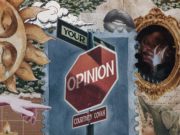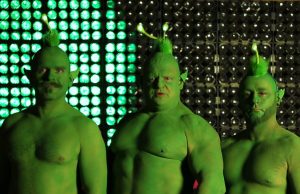 It was 50 years ago that Canada suddenly distinguished itself on the Billboard Hot 100. That year, Canadian artists were responsible for four No. 1 hits on America’s predominant music chart. This is a feat which has never been topped, and only once been matched — in 2021. This year, 2024, no Canadian artist topped the Billboard 100. This all-important chart has been around since 1913. The first time a Canadian appeared at No. 1 was in 1959 when Ottawa’s Paul Anka topped the chart with Lonely Boy.
It was 50 years ago that Canada suddenly distinguished itself on the Billboard Hot 100. That year, Canadian artists were responsible for four No. 1 hits on America’s predominant music chart. This is a feat which has never been topped, and only once been matched — in 2021. This year, 2024, no Canadian artist topped the Billboard 100. This all-important chart has been around since 1913. The first time a Canadian appeared at No. 1 was in 1959 when Ottawa’s Paul Anka topped the chart with Lonely Boy.
Over the course of the next 15 years, Canadians only managed to top the charts four times — one was a syrupy instrumental (Percy Faith’s Theme From A Summer Place in 1960), another was a novelty country song by a TV actor (Lorne Greene’s Ringo in 1964) a rock song (The Guess Who’s American Woman in 1970), and a folk anthem (Neil Young’s Heart Of Gold in 1972).
Including Anka, arguably only one of those songs was distinctly Canadian — The Guess Who’s riff-tastic, famous anti-American anthem. Anka was already eyeing Vegas and presenting himself more as a crooning teen idol than a pop star. Personally, I had no idea Faith was Canadian, but the Toronto-born musician-turned-bandleader moved to New York when he was still in his 20s. Theme From A Summer Place always reminds me of More American Graffiti.
I knew Greene was Canadian because, for a time, his son was a back-to-the-land hippie who erected a geodesic dome not far from where I grew up in rural Renfrew County. When I was a kid, Greene was everywhere — his New Wilderness show was on before the cartoons on Saturday mornings, he was the star of the heavily re-run Bonanza — for which a restaurant in my hometown was named, not to mention the chain of Ponderosa steakhouses. Most importantly, however, the Ottawa-born actor was Comm. Adama on Battleship Galactica.
Greene — born Lyon Green — got his start in broadcasting in the 1930s, first with the CBC, where he became known as “the voice of Canada” during his time reading the national news. Eventually this nickname was refined to “the voice of doom” after Canada’s entry into the war in 1939. Greene went on to other newsreading jobs, voiceover work with the National Film Board and even started his own broadcasting school in 1950 — Lorne Greene’s Academy of Radio Arts. He shut it down two years later and relocated to the U.S. to do theatre and television, snagging the role in Bonanza in 1959. His success on the series led to a string of western-themed records featuring Greene’s booming voice mostly speak-singing, in an even more pronounced style than Johnny Cash. This is when he scored a huge hit with Ringo — a tale inspired by outlaw Johnny Ringo (and the eventual inspiration of the Canyonero SUV jingle on The Simpsons, more than 30 years later).
Needless to say, a song about an American outlaw from Tombstone, Arizona, isn’t exactly Snowbird. Canada had no Billboard toppers through the free-love era of the ’60s — nothing at all from 1965-’69, despite the fact that a great many Canadians were playing major roles in pop bands of the day: Neil Young and Bruce Palmer in Buffalo Springfield, Young in CSNY, Skip Spence in Moby Grape, Joni Mitchell, Jerry Edmonton and Goldy McJohn of Steppenwolf, Denny Doherty in The Mamas & The Papas, Gordon Lightfoot, Leonard Cohen, Andy Kim with The Archies, all of The Band except Levon Helm, David Clayton-Thomas in Blood Sweat & Tears, Zal Yanofsky in The Lovin’ Spoonful, and Corky Laing of Mountain.
This was all in the pre-MAPL era of Canadian content requirements. MAPL stands for music, artist, performer, lyrics. In 1971 and 1972, a song had to have a Canadian responsible for at least one of those things to be considered Canadian content — after 1972, this requirement rose to two of four. The initial CanCon regulations stipulated that 25% of airplay had to be Canadian. The result was greater exposure for Canadian artists, and with that exposure came greater opportunities to crack the American market. This is why after 1971 we started to see more Canadian presence on the Billboard Hot 100.
But first, one last pre-CanCon monster hit, American Woman. The narrative of the song is anti-American, though many probably didn’t pick up on that the same way they didn’t with Bruce Springsteen’s Born In The USA. The first Canadian with a Billboard No. 1 of the CanCon era was Young, who scored with Heart Of Gold — one of two chart hits from 1972’s Harvest.
There were no Canadians atop the Billboard Hot 100 in 1973 — the year of Tie A Yellow Ribbon Round The Ole Oak Tree. The top Canadian hit on the Billboard 100 in 1973 was Wildflower by Skylark (featuring David Foster), which got to No. 9.
Things exploded in 1974. Five Canadian tracks topped the Billboard Hot 100 — a feat not repeated until 2021. The songs: The depressing Seasons In The Sun by Terry Jacks, the ragey confessional Sundown by Gordon Lightfoot, the abhorrent You’re Having My Baby by Paul Anka and Odia Coates, Rock Me Gently by Montreal’s Andy Kim, and You Ain’t Seen Nothing Yet by Bachman-Turner Overdrive. None of them would ever have another No. 1 on the chart. Kim, born Androwis Youakim, got his first taste of pop stardom as an anonymous member of the fictional Archies — co-writing and providing backing vocals on Sugar, Sugar in 1969. This was also a Billboard No. 1.
Canada had a mid-’70s dry spell — no American chart-toppers until 1978. The top Canadian hit stateside in 1975 was Anka & Coates’ One Man Woman / One Woman Man, which got to No. 7. Anka also had the top Canadian hit of 1976 — Times Of Your Life also got to No. 7. In 1977, the top Canadian hit on the Billboard 100 was Stand Tall, the debut solo single by Burton Cummings which got to No. 10.
We got back to the top of the chart in 1978 with ex-Sweeny Todd frontman Nick Gilder’s Hot Child In The City. It was his last No. 1 anywhere on any chart. An even more protracted dry spell followed from 1979 through 1984, when Canada was busy with Rush, Bob & Doug McKenzie and Anne Murray (whose real name is actually Morna Murray). The top Canadian Billboard hits during that five-year drought were Music Box Dancer by Frank Mills (No. 3 in 1979), Daydream Believer by Murray (No. 12 in 1980), Living Inside Myself by Gino Vannelli (No. 6 in 1981), Working For The Weekend by Loverboy (No. 29 in 1982), Straight From The Heart by Bryan Adams (No. 10 in 1983), and Sunglasses At Night by Corey Hart (No. 7 in 1984).
Adams and Murray returned Canada to the top of the Billboard 100 in 1985 with their hits You Needed Me and Heaven. We came close in 1986 with Don’t Forget Me (When I’m Gone) by Glass Tiger, which got to No. 2. I suppose you could argue that 1987 was another near-miss year. Our top Billboard hit was the duet Can’t We Try by Dan Hill and Vonda Shepard, which got to No. 6, but was Billboard’s top adult contemporary single of the year — period. Sometimes when we suck…
Speaking of which, 1988 was a bum year for Canada and the Billboard 100. Our top song on the chart was I’m Still Searching by Glass Tiger, which only got to No. 31. Thankfully, we were pretty hot after that, starting in 1989 when we pinched the loaf that was the ballad When I’m With You by Sheriff. I always thought this song was called Lost In Love.
Sheriff were from Toronto, and this song was actually released in 1982. It got to No. 8 in Canada and No. 61 on the Billboard 100 in 1983. The band broke up in 1985 and two of them went on to found Frozen Ghost. But when this song was re-released by Capitol in 1989, it shot to the top of the charts for Valentine’s Day. Awww.
The very next year, Alannah Myles took Canada back to the top of the Billboard 100 for two weeks with her monster hit Black Velvet. I remember our band opening for Lee Aaron that year in our high school gym. Aaron’s hit at the time was Whatcha Do To My Body, and she was pretty competitive with Myles, whom she seemed to see as her adversary. Her song won a Juno for Video Of The Year in 1990, while the album — Bodyrock — won Best Album and Best Rock Album Junos in 1991. But she didn’t scratch Billboard and only got to No. 25 in Canada.
Our run continued in 1991 with the horrid Adams ballad (Everything I Do) I Do It For You. This was Bryan’s biggest hit — No. 1 worldwide. He had Billboard chart-toppers twice more in the ’90s — first in 1993 with Sting and Rod Stewart on All For Love, followed by Have You Really Ever Loved A Woman? in 1995. All ballads. All awful.
Canada fired blanks in 1992. Our biggest hit on Billboard during the height of grunge was Life Is A Highway by Tom Cochrane. Our helmet-haired friend got up as high as No. 7.
Toronto’s Darrin O’Brien (aka Snow) topped the charts with Informer from his debut album 12 Inches of Snow. The reggae-influenced rapper was the first Canadian hip-hop artist to hit No. 1 on Billboard. It did better in the States than it did in Canada and topped 18 charts around the world. Informer was the 10th hottest song in the U.S. in 1993 — but only the 86th in Canada.
The aforementioned Adams topped the chart in 1994 with Sting and Stewart, followed by the first appearance of Céline Dion atop the Billboard 100, with The Power Of Love. The queen of power ballads got back in this position three more times, with Because You Loved Me (1996), My Heart Will Go On (1998) and I’m Your Angel (1998).
There was no Canadian No. 1 in 1997. We came damn close, though, with two Dion singles. All By Myself got to No. 4 in January and It’s All Coming Back To Me rose to No. 2 in August.
The third Canadian No. 1 in 1998 was One Week by Barenaked Ladies, followed by a two-year dry spell where our biggest hits were Nobody’s Supposed To Be Here by Deborah Cox (No. 2 in 1999), and That’s The Way It Is by Dion (No. 6 in 2000).
I hate to remind you, but Nickelback technically topped the Billboard 100 in both 2001 and 2002 with How You Remind Me. Perhaps, Americans held it against us, because we didn’t have a chart-topper again until Daniel Powter’s Bad Day and Nelly Furtado’s Promiscuous in 2006. Here are the three singles which came closest in the interim — I’m With You by Napanee, Ont.’s Avril Lavigne (No. 4 in 2003), Nickelback’s Someday (No. 7 in 2004) and Photograph (No. 2 in 2005).
Canadian artists topped the chart three times in 2007 — Furtado was two of them. First she got there with Say It Right, then again with Timbaland and Justin Timberlake with Give It To Me. The third No. 1 of 2007 was Lavigne’s eighth single to chart in the States, but her first and only No. 1 — Girlfriend.
There are two more blank years after that. In 2008, Finger Eleven got to No. 6 with Paralyzer, and former Degrassi kid Drake (Aubrey Graham) showed up at No. 2 with Best I Ever Had in 2009. He paired up with Rhihanna in 2010 and got to No. 1 with What’s My Name? It was strong enough to continue charting into 2011, reaching No. 20 — Canada’s highest-charting single of the year.
Carly Rae Jepsen cruised to No. 1 in 2012 with the hit everyone seemed to love — Call Me Maybe. Drake started from the bottom and took Started From The Bottom to No. 6 in 2013 — Canada’s biggest Billboard hit of the year. Toronto reggae-fusion band Magic! took us back to No. 1 in 2014 with Rude before we entered a very big 2015 year — and the heart of the Justin Bieber / Weeknd / Drake era.
Basically, 2015 to 2023 is the most successful period for Canadian pop stars when it comes to the Billboard 100. We had three No. 1s in 2015 — Can’t Feel My Face and The Hills by The Weeknd (Abel Tesfaye), and What Do You Mean? by Bieber. The boy wonder from Stratford, Ont., topped the chart twice in 2016 with Sorry followed by Love Yourself. Then Drake topped the chart twice that year — first with Rhianna on Work and again with Wizkid and Kyla on One Dance.
The Weeknd stormed back to No. 1 in 2017 with Daft Punk on Starboy, followed by two more Bieber-involved No. 1s — I’m The One (really, a DJ Khaled track featuring Biebs, Quavo, Chance The Rapper and Lil’ Wayne), and the monster Despacito by Luis Fonsi and Daddy Yankee, featuring Bieber. You can safely call 2018 Drake‘s year. Even his beloved Toronto Raptors had their best season yet, finishing first in the NBA’s Atlantic Division and in the Eastern Conference. Drake had three No. 1 songs on the Billboard 100 in 2018 — God’s Plan, Nice For What and In My Feelings.
We had two chart-toppers in 2019 — Senorita by Shawn Mendes of Pickering, Ont. and Camila Cabello, followed by a triumphant return of The Weeknd with Heartless. He wasn’t done, either — he also got to the top of the Billboard 100 in 2020 with Blinding Lights. Drake followed suit with Toosie Slide, and Bieber (this time with Ariana Grande) on Stuck With U.
That brings us to our biggest year since 1974. Canadian artists had five U.S. No. 1s in 2021 — Bieber and Drake were involved in two of them, and The Weeknd on the other. You got What’s Next by Drake, Peaches by Bieber, Daniel Caesar and Giveon, Save Your Tears by The Weeknd and Grande, Stay by Bieber and The Kid Laroi, and finally Way 2 Sexy by Drake with Future and Young Thug.
It’s practically nuthin’ but Drake in 2022 and 2023. He guested on Future’s hit Wait For U and then 21 Savage guested on his hit Jimmy Cooks. Then in 2023, there are two more Drake collabs — Slime You Out with SZA, and First Person Shooter with J. Cole. Finally, The Weeknd and Grande hit No. 1 with Die For You.
In case you’re wondering, it’s not looking too likely for a Canadian No. 1 in 2024. Drake got to No. 7 with Act II: Date @ 8 in March. The Weeknd guested on Young Metro by Future and Metro Boomin’ in April, getting up to No. 9. Oshawa’s Daniel Caesar is featured on Tyler The Creator’s St. Chroma, which got up to No. 7 in November. The most recent challenger is once again The Weeknd with Playboi Carti on Timeless, which peaked at No. 3 in October but was still hanging around more than a month later.
Using their number of U.S. chart-topping appearances, we can make an argument for the title of Canada’s greatest pop star:
Drake | 13
Justin Bieber | 8
The Weeknd | 7
Céline Dion / Bryan Adams | 4
Nelly Furtado | 3
Paul Anka / Andy Kim / Randy Bachman | 2
All told, Canadians have been attached to 62 No. 1 hits on the Billboard 100 over the past 65 years. Here’s a playlist of all of ’em:
• • •
Area Resident is an Ottawa-based journalist, recording artist, music collector and re-seller. Hear (and buy) his music on Bandcamp, email him HERE, follow him on Instagram and check him out on Discogs.









































